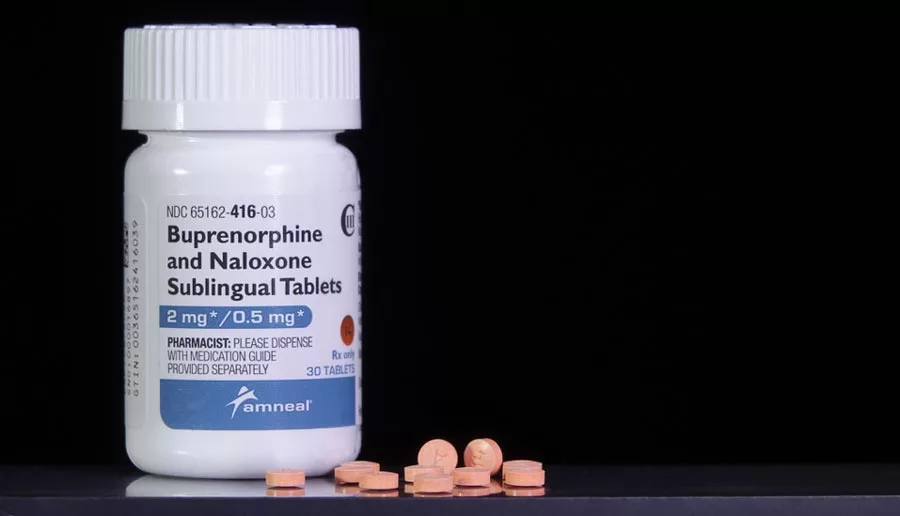Fentanyl Addiction: One of the Leading Killers In Our Country
The drastic onset of fentanyl addiction has taken our country by storm. This deadly substance is turning the lives of the people who use it upside down and often leaving them with the feeling that there’s no light at the end of the tunnel. This is not true, fentanyl addiction treatment can help these individuals get a grip on fentanyl addiction and help them gain a better understanding of why they engage in this behavior. With the goal of long-term recovery in mind, fentanyl addiction treatment provides a unique personalized experience that gives the clients of Exclusive Hawaii Rehab a fighting chance at long-term recovery.
At Exclusive Hawaii Rehab, we provide a variety of effective treatment programs that can help individuals overcome fentanyl addiction and conquer the dreaded withdrawal symptoms. Medication-assisted therapy and behavioral health options are just a couple of our fentanyl addiction treatment options. Education regarding why you use, and drug abuse in general, helps you carry the fight past our fentanyl addiction treatment program and back into the real world.
If you or someone you know is battling fentanyl addiction, please read this article until the end. It contains vital information about how you can reclaim your life and get past fentanyl abuse today!
Experience True Healing
Our deeply-caring staff and the surrounding natural beauty offer an unparalleled healing experience.
What Is Fentanyl: Synthetic Opioids and The Action on the Brain
Fentanyl is initially prescribed for severe pain. Typically, only patients experiencing a life-threatening illness who are attempting to remain comfortable during their final moments in life become candidates for fentanyl – that should give you a sobering picture of just how strong the effects of fentanyl are.
Besides treating severe pain, there’s another element at play during fentanyl abuse. Feel-good receptors in the brain are released in the body, causing a euphoric or numbing feeling that people struggling with depression, anxiety, and other underlying mental health disorders gravitate toward.
The reduction in the brain’s natural release of the chemical dopamine also causes the release of the feel-good hormone known as dopamine. When people engage in fentanyl abuse, the release of this chemical in the brain triggers feelings of pleasure. On the other hand, the other parts of the brain also produce long-lasting connections between the positive emotions of fentanyl abuse. This is what makes the effects of fentanyl so strong on those with a fentanyl addiction.
This is a situation that’s known as a conditioned association – and is actually one of the strongest elements at play when it comes to fentanyl addiction – or any other drug abuse issue.
The Harsh Reality of Fentanyl Addiction

The effects of fentanyl addiction are grave compared to those of prescription opioids and other illegal drugs. During fentanyl addiction, the brain’s chemical makeup is completely transformed, and the people engaging in fentanyl abuse become reliant on the chemicals created by the effects of fentanyl in the brain.
Although it’s normal to feel happy, fentanyl addiction can affect your natural ability to experience emotion and have lifelong health effects. When people abuse synthetic opioids, it becomes challenging to participate in daily activities without being under the influence of fentanyl. Otherwise, there’s either no emotion involved or extreme depression and anxiety.
What are the Typical Fentanyl Withdrawal Symptoms?
Fentanyl withdrawal symptoms are characterized by intense cravings for fentanyl and other opioid drugs. This is the body yearning for the opioid receptors to become activated. When fentanyl treats severe pain, it’s these same opioid receptors that are “turned on” by the action of fentanyl in the brain.
During fentanyl addiction, they become constantly turned on, and the body forgets what it feels to function with them turned off.
Individuals who abuse fentanyl will display physical and mental side effects. After running out of the drug, the withdrawal symptoms of fentanyl addiction begin to appear extremely quickly. This is because of the short half-life of fentanyl. Among other prescription opioids, fentanyl has one of the shortest-acting half-lives.
Unfortunately, its extreme potency has caused a huge number of overdose deaths, and the strength and lack of regulation of illicit fentanyl only fuel this crisis further.
Withdrawing from Fentanyl and Other Opioids
Withdrawal from fentanyl and other opioid drugs is marked by a distinct set of symptoms. Those experiencing detox from prescription opioids like fentanyl typically experience the following:
- Yawning
- Watery Eyes
- Body Aches
- Extreme Fatigue
- Lack of sleep
- Restless Legs and Arms
- Stomach Cramps
- Diarrhea
- Nausea
- Intense Cravings
- Goose Bumps
- Hot and Cold Sweats
- Shivering
- Intense Mental Episodes from Lack of Sleep
Those who abuse fentanyl don’t take long to develop a fentanyl addiction. This type of drug use is usually triggered by the stress levels that people experience. At this point, those who used fentanyl for pain begin enjoying it for other reasons. And those who never used it for pain become immersed in the way it makes them feel and the way it makes them not feel.
Some people who abuse fentanyl believe that the euphoria caused by the drug makes them forget about their problems. Medication-assisted therapy is one of the most efficient ways to tackle this problem, as it allows users to get used to leading a normal life without the urge to fight off withdrawal.
Although frowned upon by some in the recovery community, medication-assisted treatment is proving to be one of the only ways to keep fentanyl addiction at bay.
Fentanyl Addiction Treatment Program Options: Medication Assisted Therapy

One of the most effective drugs for treating fentanyl abuse is methadone. Most any fentanyl addiction treatment program you encounter likely has the option for methadone maintenance or buprenorphine maintenance.
These are effective because they can help people maintain their progress and prevent them from experiencing withdrawal symptoms. According to experts, this type of treatment is the most effective way to treat opioid use disorder. They help people reduce the possibility of relapse by keeping the most intense withdrawal symptoms at bay.
MAT for Fentanyl in an Outpatient Setting
People can maintain their regular schedules while receiving treatment in an outpatient setting. When you’re battling opioid withdrawal symptoms, it’s difficult to maintain a normal life. This is because you’ll do anything it takes to avoid the painful withdrawal symptoms that accompany fentanyl misuse – even if it means stealing, cheating, and other illegal actions.
However, there is always an abuse potential when addiction treatment is combated with medication-assisted therapy. It can’t be understated how important it is to reach the optimal maintenance dose and level out, not allowing yourself to go any higher. This could even mean experiencing some form of discomfort for a few days while you stabilize on your dose.
Experience True Healing
Our deeply-caring staff and the surrounding natural beauty offer an unparalleled healing experience.
Methadone or Buprenorphine to Treat Fentanyl Addiction?
Individuals who use heavy amounts of opioids before they start treatment are more likely to benefit from methadone. Those who consider themselves light users may see better results with buprenorphine. This is because it’s extremely hard to introduce buprenorphine to the body when users engage in large amounts of fentanyl use.
It’s important to remember that without mental health treatment in combination with medication-assisted therapy, your efforts are futile. It’s of the utmost importance that you give proper attention to the underlying causes of fentanyl and opioid addictions. Medication-assisted therapy isn’t meant to be a permanent solution. It’s a temporary remedy for a long-term problem. Long-term healing only comes from engaging in the proper avenues of addiction treatment.
Methadone for Fentanyl Addiction Treatment
People who seek treatment for these conditions can learn how to manage their emotions and avoid triggering relapses. Individuals may need to use substances due to stress or other psychological issues, but counseling can help them cope with their feelings and stay away from triggers.
Once the body stops producing opioids, withdrawal symptoms will no longer occur. This can help people who are still struggling with their addiction to avoid experiencing relapses. One of the most important factors that people consider when it comes to treating opioid use disorder is the ability to manage their cravings and feelings. This can help them put their focus on the issues that caused them to use fentanyl in the beginning.
One of the most powerful characteristics of methadone is the fact that it weakens the effect of other opioids. You can attempt to use fentanyl but without an incredibly large dose, you’re likely making a losing attempt at getting high.
Buprenorphine for Fentanyl Addiction Treatment

In order to effectively treat opioid use disorder, people can use medication-assisted therapy (MAT) with the help of buprenorphine. Buprenorphine has been successful at helping users avoid relapse, but only if induction is successful. Many heavy fentanyl users have difficulties making it through the induction process without experiencing precipitated withdrawal.
Although both buprenorphine and methadone can be effective in treating opioid use disorder, they have to be used cautiously due to the patient’s individual history and willingness. One of the main differences between these two drugs is how they interact with opioid receptors. Buprenorphine is known to have a “ceiling effect.” This means that it does not fully activate the receptors. This means out of the two; buprenorphine has the least potential to cause a high.
Does Suboxone Get You High?
The user may experience a euphoric feeling with the initial dose of buprenorphine, but this disappears after the first use. This is what’s called the buprenorphine ceiling effect.
The most common form of buprenorphine treatment for fentanyl addiction is Suboxone maintenance. Suboxone is actually buprenorphine combined with the drug Naloxone.
The initial consultation for medication-assisted therapy usually lasts about two to three hours. After that, the client receives their first dose of medication. During this period, a physical and medical examination is also conducted to check the patient’s background and determine if they are fit to use the therapy.
When a client participates in methadone or buprenorphine therapy, it’s mandatory that they also engage in some form of substance abuse or mental health counseling.
Different types of substance abuse treatment programs also provide individual therapy sessions for their clients. These sessions are designed to help people identify and work through the various triggers, feelings, and behaviors that led them down the path of fentanyl abuse. This is the true healing and hard work done for fentanyl recovery.
Without this intense therapy, medication-assisted treatment does little to nothing for the long-term problem of addiction.
Identifying Why You Fall Into Opioid Use Disorders

Individuals who are not aware of the harmful effects of their past actions or situations may find it difficult to identify the factors that contributed to their substance use disorder. How can you heal anything if you’re not sure what you actually did wrong? It’s only through the acceptance that you have a problem with addiction that you can truly begin healing.
Through counseling, you’ll learn how to manage your current situation and avoid additional complications in the future. How can you make the most of what you have directly in front of you to overcome your addiction? It becomes vital that you use your tools efficiently and correctly in order to gain the most from fentanyl addiction treatment.
Luckily, as time goes on, these tools grow to larger numbers. Presently, the average participant in rehab has a significant amount of recovery resources to help them navigate the harsh waters of addiction treatment. However, you can’t make someone want to get better. You can only provide them with the tools they need – it’s up to them to decide how they’re going to use these tools to make the most out of their experience in treatment.
The Importance of Group Therapy and Support Systems
While individual therapy can be very lonely and intimidating, group therapy can help decrease the isolation that many individuals experience during their recovery. In addition to being able to talk to other individuals who have experienced similar issues, group therapy can also help patients develop a stronger support system.
One of the biggest advantages of group therapy is that it allows people to talk about their problems with other individuals who have similar issues. This can help decrease the feelings of shame and guilt that they have. Group therapy also gives you the benefit of camaraderie. This is an often overlooked element when it comes to healing from addiction. The accountability and friendship factor is at play heavily during the 12-step model.
Because your “brothers” or “sisters” in treatment rely so heavily on you during group meetings and otherwise, you almost feel obligated to continue not only on your recovery journey for yourself but for them as well. In one source, a writer compared people in addiction treatment together to old war buddies – it’s a bond that only they truly understand and an intimate experience where they’re both stripped to their core without the ego at play.
After the therapy sessions, aftercare becomes the next and often most crucial step in fentanyl addiction treatment.
Addiction Aftercare and Sober Support Systems

Aftercare comes in a variety of different shapes and sizes. Various programs exist to help those graduating from treatment to continue on their journey of sobriety. Recovery is not something with a finish line – it’s a constant walk that requires constant attention. If you fail to provide the right attention, the chances increase that you fall into the pitfalls of relapse.
It becomes more important the longer you go remaining clean – it’s important not to get overly confident. It’s during these times that relapsing happens without you even considering it. Most users get the idea that “I’ve been clean for XXX amount of years – one time won’t hurt.” One time is never enough.
Your support pillars and aftercare strategies can help you avoid these situations and keep you on the right path. Our non-12-step approaches and SMART Recovery are both excellent options for aftercare – and we provide groundings in both of them at Exclusive Hawaii Rehab during and after treatment.
Experience True Healing
Our deeply-caring staff and the surrounding natural beauty offer an unparalleled healing experience.
Long Term Recovery from Fentanyl Addiction Can Be Your Reality
At our substance abuse treatment center, our goal is to provide our clients with the necessary tools and services to help them overcome their addictions. Call our Intake Coordination team today to learn more about our programs and how we can help with your opioid problem. You don’t have to fight fentanyl alone – we have an entire team dedicated to seeing you succeed.
Take that first step and call today for a confidential consultation!